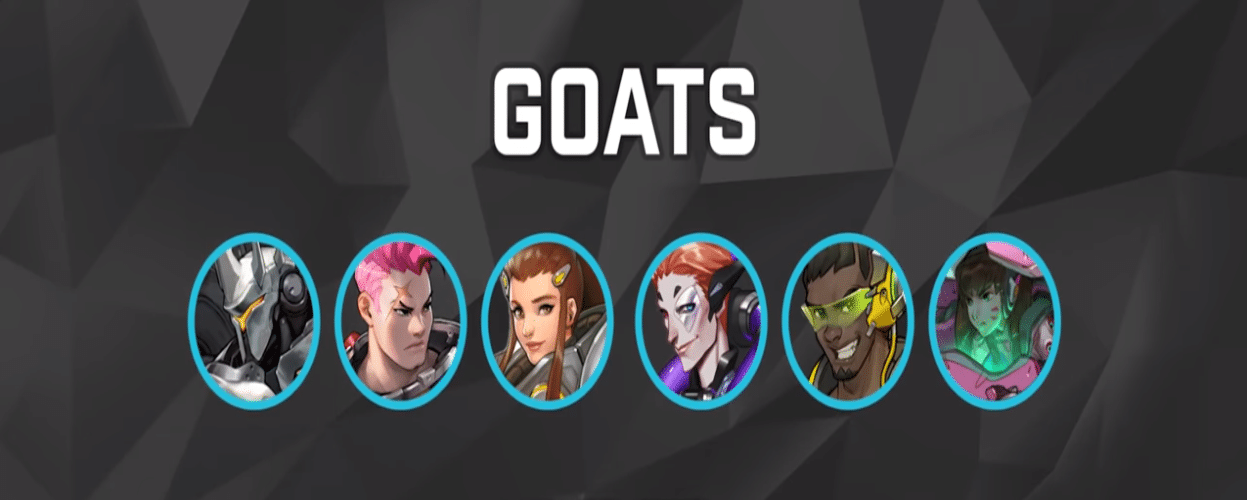
Goats In Overwatch
One thing that has been the talk of the town with respect to the Overwatch gaming community for quite some time now is the dominance of GOATS. For starters, GOATS is a type of team configuration, named after the North American Team GOATS. The team in question came up with this “meta” during the 2nd season of open division play and the rest is history.
After the GOATS’ beyond exceptional performance, people started realizing the effectiveness of the said meta or team composition. To form a basic GOATS composition, a team should be positioned in a way that there are three tank heroes and three support heroes/healers. As GOATS gained prominence, it earned other names such as “three-three” or “triple-triple”.
D. Va, Zarya, and Reinhardt were chosen as the tank heroes, and Lúcio, Zenyatta, and Brigitte were roped in as the support group in the initial GOATS lineup. To give a brief insight, the tank members lead the charge with effective shields and impressive health bars. This is where the roster selection comes into play. The tank lineup mentioned above is quite important for this meta as the combo attacks executable by the particular tank heroes are the key to eradicating the competition.
As for the healers, their main task is to ensure the safety of the tanks as well as to counter the attempts of the rivals. The healers’ lineup is quite adjustable and welcomes changes.
Over time, this team composition turned out to be quite shatter-proof. Members of the gaming community found it quite hard to one-up the GOATS in terms of strategy and positioning. In the advanced levels, it started becoming very common for teams to adopt this strategy and secure their chances of bagging the win.
While nobody should question the effectiveness of the GOATS meta, the oversaturation led to its ultimate demise. As discussed above, almost everyone started using this strategy during one or more levels in the game. Moreover, this formation deprived the game of the fancy stuff and the general audience soon started to get bored with the formulaic setting. To be fair, we tend to label anything as boring if we get to see too much of it, even if we used to think of it as jaw-dropping initially.
Blizzard realized it timely and decided to take action. Several adjustments were made to the roster. Some of the overpowered heroes got their powers toned down. Similarly, the heroes who needed a power boost got catered to accordingly. Then, a 2-2-2 role lock was put into practice.
Little did everyone know, the joy of getting rid of the GOATS meta wouldn’t last long. The changes that got us rid of the GOATS also led to the introduction of Sigma, a hero capable of positioning a shield anywhere (as long as the target is visible) on the battlefield. A new meta featuring Sigma and Orisa is now taking over. Named Double Shield, the strategy relies on puzzling the rival team with the abundance of shields in the battle-front.
There’s no doubt that Blizzard has a long way to go when it comes to dealing with Metagame. It hinders the excitement level of the players. Speaking about GOATS, it involved the use of proper strategy, (to an extent) fixed lineup and whatnot! Still, its fatigue soon caught up with the Overwatch community.
In the end, it can be said that meta will always be a part of the game. When one is dealt with, another one will pop up. What needs to be taken care of is that the creativity and excitement quotients remain up at all times.
Reference reads:
